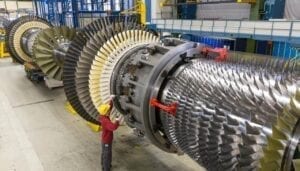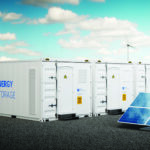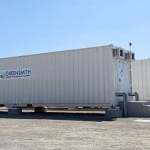Most consumers know that lithium-ion (Li-ion) batteries can get hot. People experience the phenomenon in devices such as cell phones and laptop computers. In extreme circumstances, the heat can cause fires with catastrophic consequences.
One company that is working to remedy the problem is Burlington, Washington-headquartered LAVLE. The company’s COO Morten Pedersen and CTO Ben Gully were guests on The POWER Podcast. They explained how LAVLE is making Li-ion batteries safer.
“The foundation of safety in the lithium-ion battery really comes from a good and effective thermal management system,” Gully said. “Another really critical component for safety actually ends up being the battery management system—the BMS. That’s kind of the electrical computer brains of the battery,” he said. LAVLE has put a lot of emphasis on incorporating reliable and redundant protection into its designs “that give the whole system a very high level of safety.”
Heat is generated in Li-ion batteries due to the chemical reaction that takes place in the process, as well as from inefficiencies or losses. As battery systems become larger, operate at higher power levels, and are asked to charge and discharge at faster rates, additional heat is generated, making effective management systems even more important.
“That’s really one of the key aspects of the lithium-ion batteries, especially of today, is managing that heat and getting them to make sure they operate in a safe and comfortable temperature range,” Gully said.
LAVLE has made great strides in improving battery cooling systems. It has tested various materials and cell arrangements to figure out the most efficient and effective way to remove heat from each individual cell in the quickest way possible, using every accessible surface. The company has also experimented with different working fluids and heat exchange mechanisms. Still, Gully suggested more improvements could be made in a number of areas to make Li-ion batteries safer.
LAVLE sees the marine sector as a prime market for Li-ion batteries, and its products in particular. Pedersen noted that the marine sector transfers much of the world’s cargo and releases between 2% and 3% of the world’s greenhouse gas emissions. Incorporating batteries into the shipping industry could lessen that greatly. Nonetheless, much of the progress the company has made on battery technology also translates to other sectors.
“As new power generating technologies come to market, the battery is probably a very good enabler to make those work efficiently as well, because many of the technologies we see are not very good at big peaks in power consumption,” said Pedersen. “So, the battery can kind of be the buffer that takes the big hits and the big changes in load. And then, those stable power generating technologies can help.”
To learn more about work being done by LAVLE to advance Li-ion battery technology, listen to the full interview on The POWER Podcast. Follow the links below to subscribe via your favorite platform or click on the SoundCloud player to listen now:
For more power podcasts, visit The POWER Podcast archives.
—Aaron Larson is POWER’s executive editor (@AaronL_Power, @POWERmagazine).









